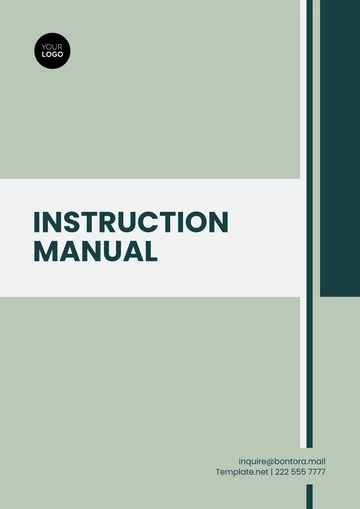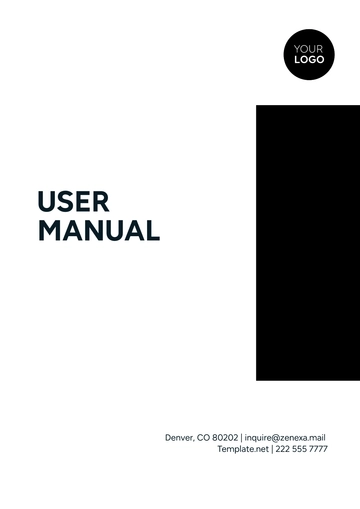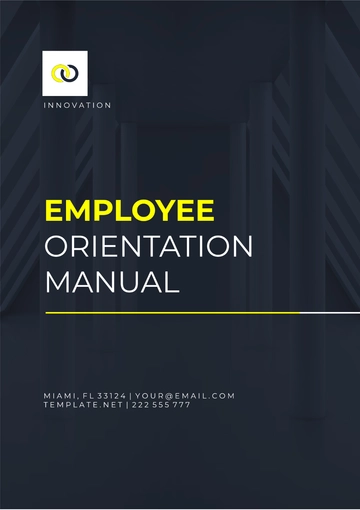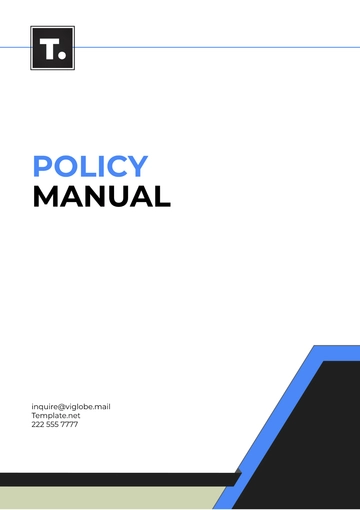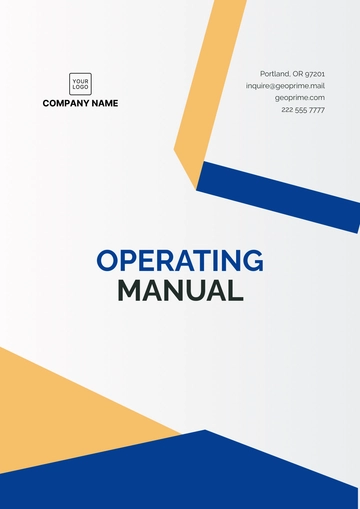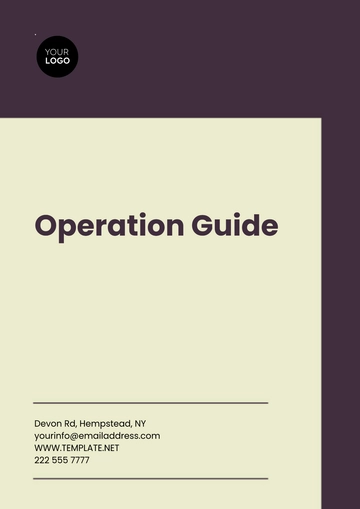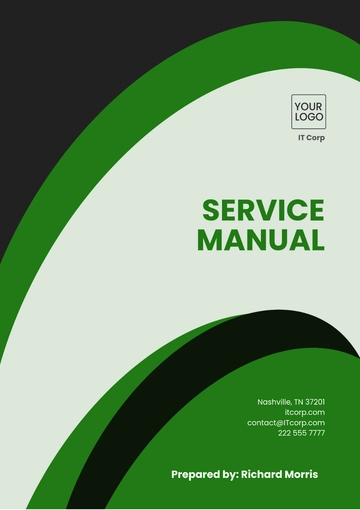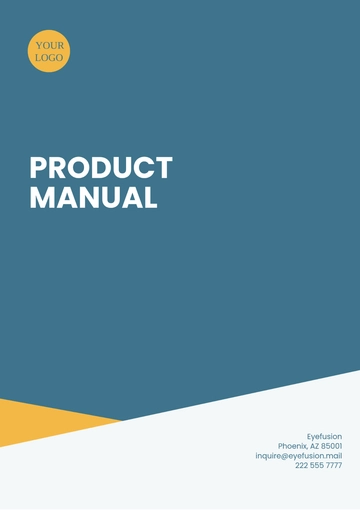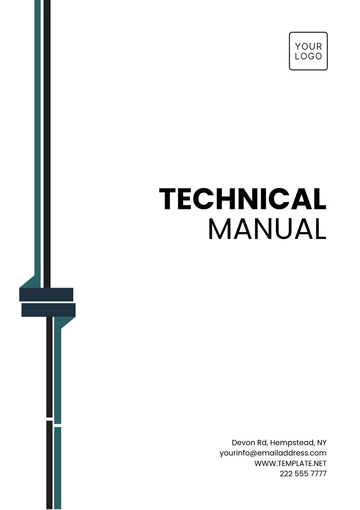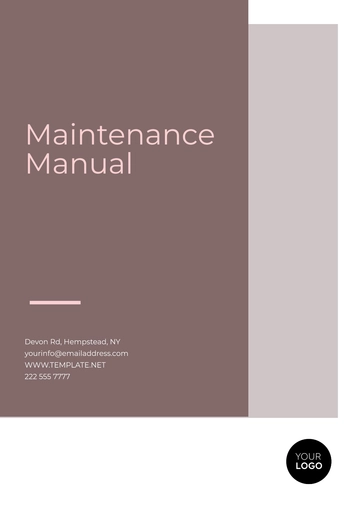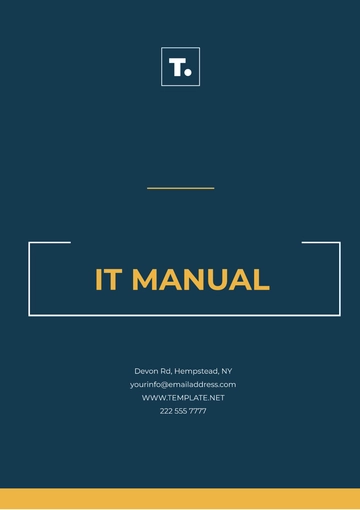Free Financial and Tax Compliance in HR Manual
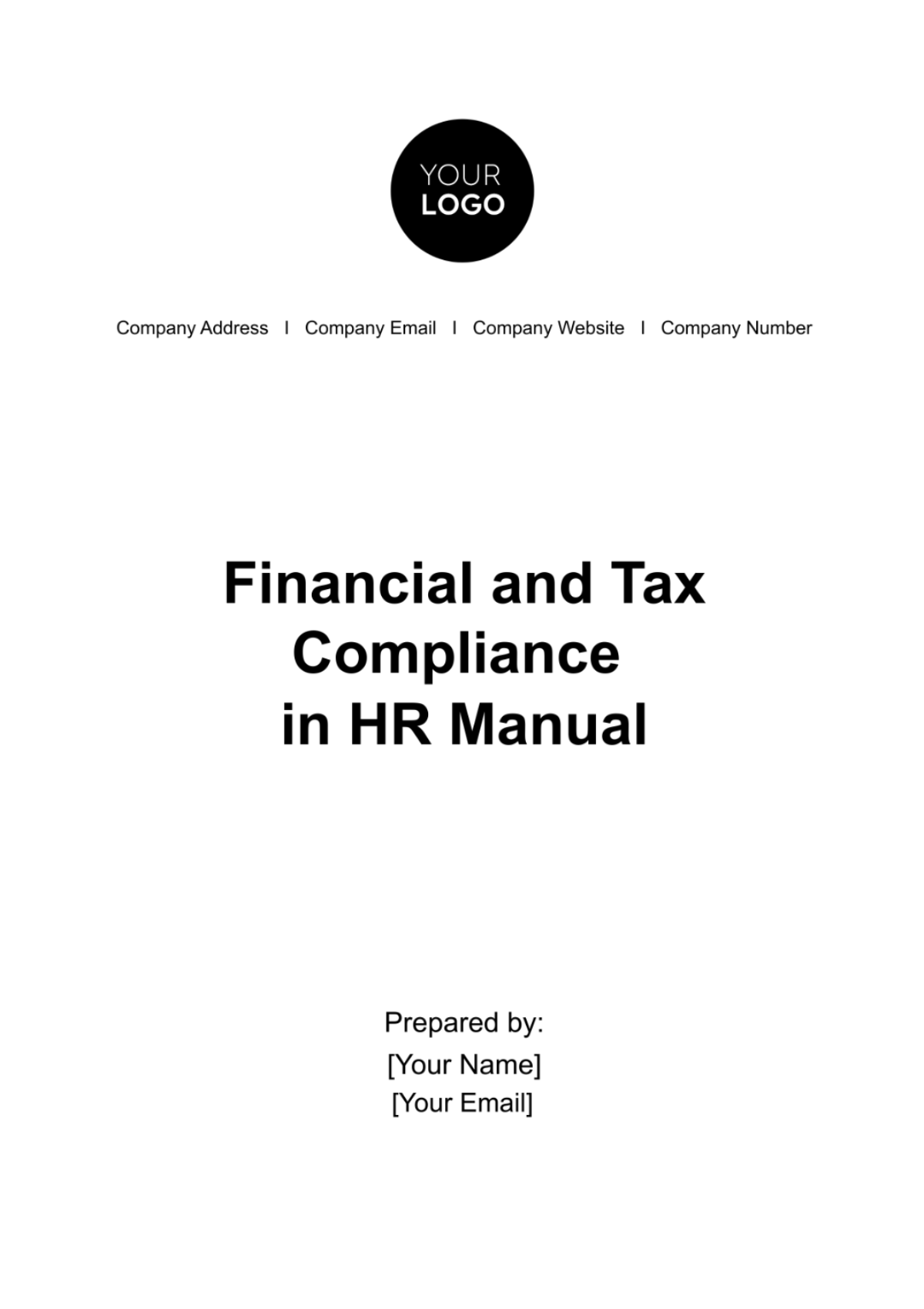
TABLE OF CONTENTS
I. Introduction .................................................................................................................4
A. Purpose and Importance...........................................................................................4
Purpose ...........................................................................................................................4
Importance .....................................................................................................................4
B. Applicable Laws and Regulations.............................................................................4
II. Payroll Processing.......................................................................................................5
A. Payroll Calculation......................................................................................................5
B. Payroll Schedule.........................................................................................................5
C. Overtime, Bonuses, and Deductions........................................................................5
D. Payroll Tax Withholding.............................................................................................5
Federal Income Tax Withholding...................................................................................5
Social Security and Medicare Taxes.............................................................................6
III. Benefits Administration.............................................................................................6
A. Health Insurance........................................................................................................6
Eligibility and Enrollment................................................................................................6
Compliance with the Affordable Care Act (ACA).........................................................6
IV. Tax Withholding..........................................................................................................7
A. Income Tax Withholding.............................................................................................7
B. Social Security and Medicare Taxes.........................................................................7
Social Security Tax..........................................................................................................7
Medicare Tax...................................................................................................................7
C. Employee Tax-Related Inquiries................................................................................7
V. Reporting and Filing....................................................................................................8
A. Reporting to Tax Authorities.....................................................................................8
B. Filing Deadlines...........................................................................................................8
VI. Record-Keeping.........................................................................................................8
A. Document Retention Requirements..........................................................................8
B. Document Security.....................................................................................................9
VII. Compliance Audits...................................................................................................9
A. Preparing for Audits...................................................................................................9
B. Responding to Auditors.............................................................................................9
C. Providing Documentation .........................................................................................9
VIII. Employee Communication.....................................................................................10
A. Employee Tax Obligations........................................................................................10
B. Benefits Communication..........................................................................................10
C. Transparency in Financial Management.................................................................10
IX. Training and Education.............................................................................................11
A. HR Staff Training Programs......................................................................................11
B. Regulatory Updates...................................................................................................11
X. Enforcement and Consequences.............................................................................11
A. Consequences for Non-Compliance.......................................................................11
B. Disciplinary Actions..................................................................................................11
XI. Escalation Procedures.............................................................................................12
A. Reporting Violations..................................................................................................12
B. Escalating Concerns.................................................................................................12
I. Introduction
A. Purpose and Importance
Purpose
Financial and tax compliance in HR is crucial to ensure that the organization follows all applicable laws and regulations. Non-compliance can lead to significant financial penalties and legal ramifications. This serves to:
Emphasize that compliance with financial and tax regulations is not optional but a fundamental requirement for the organization.
Stress that financial and tax compliance is integral to building trust with employees, stakeholders, and government agencies.
Highlight that a robust financial and tax compliance framework safeguards the organization's reputation.
Importance
Compliance is vital to avoid legal repercussions, financial penalties, and damage to the organization's reputation. By adhering to these policies, we protect both the company and its employees.
B. Applicable Laws and Regulations
The organization operates within a complex regulatory environment. Key federal, state, and local laws and regulations that impact HR operations include:
Federal Tax Laws: The Internal Revenue Code (IRC) contains rules for income tax, payroll tax, and reporting requirements. The Federal Insurance Contributions Act (FICA) and the Federal Unemployment Tax Act (FUTA) are essential components.
State Tax Laws: State tax laws differ from state to state and cover areas like state income tax, unemployment insurance, and state-specific tax credits.
Labor Laws: Laws such as the Fair Labor Standards Act (FLSA) dictate minimum wage, overtime, and child labor provisions. Familiarity with state labor laws is also vital.
Employee Retirement Income Security Act (ERISA): ERISA sets standards for retirement and welfare benefit plans, requiring fiduciary responsibilities, disclosures, and reporting.
Healthcare Laws: Compliance with the Affordable Care Act (ACA) is essential for health insurance offerings.
II. Payroll Processing
A. Payroll Calculation
Calculating employee wages accurately is fundamental. It involves determining gross pay, factoring in any bonuses or commissions, and making appropriate deductions. An example of how to calculate an employee's gross pay can be included, taking into account the employee's hourly wage, number of hours worked, and overtime pay, if applicable.
B. Payroll Schedule
The payroll schedule outlines the frequency of payroll runs. For instance, if the organization conducts bi-weekly payroll, the schedule could be structured with specific pay dates and cut-off dates to allow time for processing.
C. Overtime, Bonuses, and Deductions
Detail how to handle various payroll components:
Overtime: Explain how to calculate overtime pay for non-exempt employees according to federal and state laws.
Bonuses: Provide a formula for calculating bonuses based on performance or other criteria.
Deductions: Explain deductions for taxes, benefits, and other items, and provide a list of permissible deductions.
D. Payroll Tax Withholding
Federal Income Tax Withholding
To ensure accurate federal income tax withholding, employees are required to complete a Form W-4. This form provides information about their tax filing status, number of allowances, and additional withholding requests. The organization's payroll system uses this information to calculate the amount to withhold for federal income tax.
It is important to update Form W-4 when employees experience changes in their financial situation, such as getting married, having children, or experiencing significant changes in income. Failure to do so may result in over- or under-withholding, potentially leading to tax penalties.
Social Security and Medicare Taxes
The organization is responsible for withholding Social Security and Medicare taxes from employee paychecks. These taxes fund social insurance programs and healthcare for retirees.
Social Security Tax: As of the last update, the Social Security tax rate is 6.2% on the first $147,000 (adjusted annually) of an employee's earnings. It's important to ensure that the tax is withheld correctly and doesn't exceed the maximum taxable wage base.
Medicare Tax: The Medicare tax rate is 1.45% on all earnings, with an additional 0.9% for high-income earners. Ensure accurate calculations and withholdings for Medicare taxes.
Remember, payroll tax laws are subject to change. It's essential to stay updated with the latest tax rates and regulations.
III. Benefits Administration
A. Health Insurance
Eligibility and Enrollment
Employees may be eligible for health insurance benefits based on various criteria such as full-time status, probationary periods, or employee classification. The enrollment process typically occurs during onboarding or during the organization's open enrollment period. Eligible employees can elect to participate in the health insurance plan and may choose between different coverage options, including individual and family plans.
Compliance with the Affordable Care Act (ACA)
The organization is subject to the requirements of the Affordable Care Act (ACA). Compliance includes providing required notices to employees, reporting health insurance coverage to the IRS, and adhering to the employer shared responsibility provisions.
IV. Tax Withholding
A. Income Tax Withholding
The organization withholds federal, state, and local income taxes from employees' paychecks based on their Form W-4 and applicable tax tables. The amount withheld depends on factors such as income, filing status, and the number of allowances claimed on the Form W-4.
When employees need to adjust their withholding, they should submit a new Form W-4. For significant life events, such as marriage, divorce, or the birth of a child, employees should promptly update their withholding to align with their new financial situation.
B. Social Security and Medicare Taxes
Social Security Tax
Social Security tax is levied on a portion of an employee's income to fund the Social Security program. For the year [insert current year], the Social Security tax rate is 6.2% on the first $[insert annual wage base] of an employee's earnings. Ensure accurate withholding based on these rates.
Medicare Tax
Medicare tax, which finances healthcare for retirees, is withheld at a rate of 1.45% on all earnings. High-income earners may be subject to an additional 0.9% tax. Verify that Medicare tax withholding is correct based on these rates.
C. Employee Tax-Related Inquiries
Employees may have questions or concerns regarding their tax withholdings. It's essential to provide clear channels for employees to seek information and resolve issues. Here's how the organization handles employee tax-related inquiries:
Tax Hotline or Helpdesk: Maintain a dedicated point of contact, such as a hotline or helpdesk, to address employee inquiries related to tax withholdings. Ensure that employees have access to knowledgeable staff to answer their questions.
Tax Workshops and Resources: Provide employees with resources and workshops to help them better understand their tax obligations and tax forms. This can include information on the IRS website and access to tax calculators and tools.
Tax Forms Assistance: Offer guidance on how to complete tax-related forms, such as the Form W-4. Ensure employees can access information on how to adjust their withholding to align with their financial situation.
By facilitating open communication and support for employee inquiries, the organization ensures that employees are well-informed about their tax obligations and can address any concerns they may have.
V. Reporting and Filing
A. Reporting to Tax Authorities
Type of Report | Reporting Period | Deadline | Responsible Department |
Annual Tax Returns | Calendar Year | April 15th | Finance Department |
Quarterly Reports | Every Quarter | Last Day of Month | Payroll Department |
W-2 and 1099 Forms | Calendar Year | January 31st | HR Department |
State Tax Reports | Monthly/Quarterly | Varies by State | Finance Department |
B. Filing Deadlines
Tax Document | Deadline | Responsible Department |
Annual Tax Returns | April 15th | Finance Department |
Quarterly Reports | Last Day of Month | Payroll Department |
W-2 and 1099 Forms | January 31st | HR Department |
State Tax Reports | Varies by State | Finance Department |
VI. Record-Keeping
A. Document Retention Requirements
Type of Document | Retention Period |
Payroll Records | 4 years |
Tax Documents | 7 years |
Employee Benefit Records | 6 years |
Audit Records | 7 years |
B. Document Security
Document Security Measure | Description |
Data Encryption | Encrypt all sensitive financial and tax-related data. |
Access Controls | Restrict access to authorized personnel only. |
Disaster Recovery Procedures | Implement backup and recovery plans for data. |
VII. Compliance Audits
A. Preparing for Audits
Preparation for compliance audits is crucial to minimize disruptions and ensure accurate results. Steps for preparing for audits include:
Gather Documentation: Collect and organize all relevant financial and tax-related documents that auditors are likely to request.
Coordinate with Audit Team: Collaborate with the internal or external audit team to establish audit scope and expectations.
B. Responding to Auditors
When auditors arrive for an audit, it's essential to maintain a cooperative and transparent approach:
Provide Full Access: Allow auditors access to the requested documents and systems.
Designate a Point of Contact: Designate a point of contact within the organization who will facilitate communication between the audit team and relevant departments.
C. Providing Documentation
Once an audit is initiated, it's essential to provide auditors with the necessary documentation in an organized and timely manner:
Document Organization: Maintain an organized record-keeping system that makes it easy to retrieve specific documents requested by auditors.
Timely Responses: Respond promptly to audit requests and provide requested information within the given timeframes.
Facilitating Communication: Ensure that personnel responsible for handling audits are available to answer questions, clarify any uncertainties, and provide additional information as required.
VIII. Employee Communication
A. Employee Tax Obligations
The HR Department plays a crucial role in educating employees about their tax obligations. Information for employees should include:
Reading Pay Stubs: Provide guidance on how to read pay stubs, explaining the various components such as gross pay, deductions, and net pay. Include a sample pay stub for reference.
Importance of Updating W-4: Emphasize that employees should update their Form W-4 whenever their financial situation changes, such as getting married, having children, or experiencing significant changes in income.
B. Benefits Communication
Effective benefits communication is vital to ensure employees are well-informed about their benefits:
Access to Benefits Information: Describe how employees can access detailed information about their benefits, such as health insurance, retirement plans, and other perks. This might include referring them to an online portal, a benefits handbook, or HR representatives.
C. Transparency in Financial Management
Open-Book Policy: Highlight the organization's commitment to transparency in financial and tax matters. Explain that employees have the right to understand how their earnings are managed, and that the organization maintains an open-book policy to foster trust.
Annual Financial Reports: Mention that the organization regularly publishes annual financial reports that employees can access. These reports provide insight into the company's financial health.
IX. Training and Education
A. HR Staff Training Programs
The HR Department should ensure that HR staff are well-trained in financial and tax compliance. Training programs for HR personnel should include:
Annual Training: HR staff should undergo annual training to stay current with changes in tax laws, payroll regulations, and benefits compliance.
Resource Access: HR personnel should be familiar with available resources, such as tax authorities' websites and industry-specific training programs.
B. Regulatory Updates
To ensure HR personnel are kept informed about changes in financial and tax laws, you can provide the following resources:
IRS and Tax Authorities' Websites: Encourage HR staff to regularly check the IRS and relevant state tax authorities' websites for updates and publications.
Industry Journals and Newsletters: Suggest subscribing to reputable industry journals and newsletters that provide timely updates on changes in financial and tax regulations.
Seminars and Webinars: Highlight the benefits of attending seminars and webinars on financial and tax compliance topics.
X. Enforcement and Consequences
A. Consequences for Non-Compliance
Emphasize the importance of compliance by outlining the potential consequences for non-compliance:
Financial Penalties: Non-compliance with financial and tax regulations can lead to financial penalties imposed by government authorities.
Legal Implications: In some cases, non-compliance may result in legal actions, including audits, investigations, and possible litigation.
Reputation Damage: Non-compliance can damage the organization's reputation, affecting its relationships with employees, stakeholders, and the public.
B. Disciplinary Actions
Explain how disciplinary actions for non-compliance are enforced:
Internal Policy Violations: Employees who violate financial and tax compliance policies are subject to disciplinary actions in line with the organization's internal policies.
Progressive Discipline: Outline the progressive discipline approach, which may include verbal or written warnings, probation, and, in severe cases, termination.
Corrective Actions: Describe the steps taken to correct non-compliance issues and prevent them from recurring.
XI. Escalation Procedures
A. Reporting Violations
Detail the process for reporting financial and tax compliance violations:
Supervisor or HR Contact: Encourage employees to report issues to their immediate supervisor or contact the HR department, including the preferred method of communication.
Chain of Command: Explain the escalation process, including how concerns are escalated from supervisors to department heads and, if necessary, to executive leadership.
B. Escalating Concerns
Explain the steps for escalating financial and tax compliance concerns to higher levels of management or external authorities:
Internal Escalation: Describe the process for elevating concerns within the organization, including how and when to involve senior management.
External Reporting: If concerns cannot be addressed internally or involve illegal activities, provide guidance on how to report them to external authorities, such as government agencies or regulatory bodies.
- 100% Customizable, free editor
- Access 1 Million+ Templates, photo’s & graphics
- Download or share as a template
- Click and replace photos, graphics, text, backgrounds
- Resize, crop, AI write & more
- Access advanced editor
Ensure HR compliance with ease using our Financial and Tax Compliance in HR Manual Template. This comprehensive resource simplifies complex financial and tax regulations, reducing compliance-related risks and ensuring a smooth and legally sound HR operation. Stay on top of regulatory changes, secure your organization's financial integrity, and maintain a compliant workplace.
